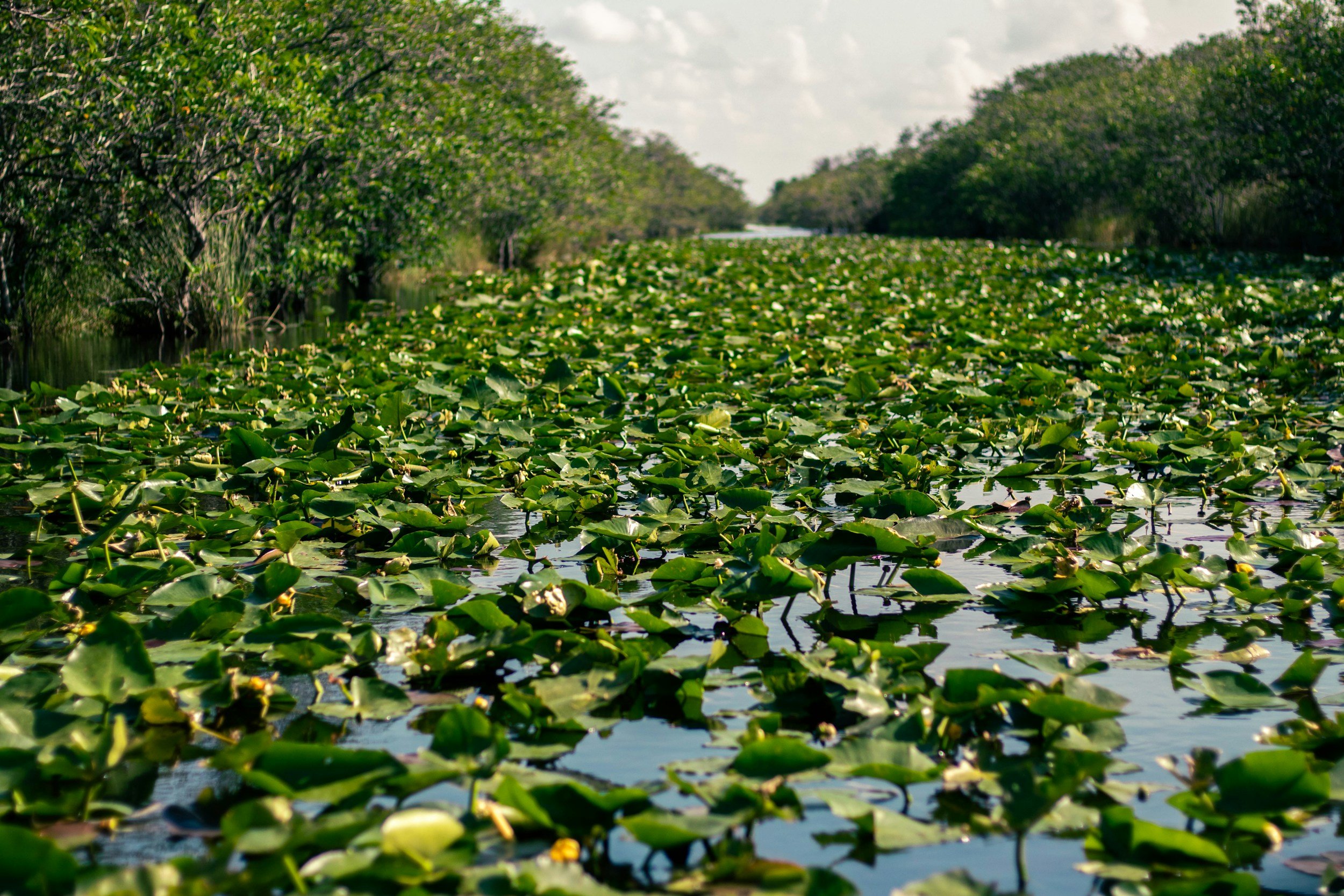
Everglades
Status, Conservation, and Future Outlook of the Everglades
The Everglades is a large area of wetland ecosystem in southern Florida, more commonly known as the "River of Grass" because its water, though flowing, does so very slowly through a vast, flat expanse of sawgrass. Covering approximately 1.5 million acres, the Everglades is one of the most biologically diverse and ecologically important regions in the world. It forms a critical habitat for various species of plants and animals, of which many are in the list of endangered species. Along with this, it contributes to water filtration, controlling floods, and regulating climate conditions. Still, this salient place is suffering from growing threats, requiring rigorous conservation to re-establish the fragile ecosystem of the Everglades.
Status of the Everglades
The Everglades are made up of interrelated habitats that include marshes, cypress swamps, mangroves, hardwood hammocks, and coastal estuaries. Historically, the Everglades covered approximately 11,000 square miles, from the Kissimmee River Basin in Central Florida to Florida Bay. Human activities throughout the past century have greatly transformed this region.
Key factors impacting the Everglades include:
1. Water Diversion: More than 50% of the original Everglades has been drained or converted for agriculture and urban development. Water is diverted for irrigation, flood control, and municipal use, disrupting natural flow patterns.
2. Urbanization: Expanding cities like Miami and Fort Lauderdale have encroached on the Everglades, fragmenting habitats and reducing its size.
3. Pollution: Runoff from fertilizers, pesticides, and urban areas adds high levels of phosphorus and other nutrients to the waters, triggering harmful algal blooms that choke out native vegetation.
4. Invasive Species: Non-native species-the Burmese python, Brazilian pepper tree, and melaleuca tree among them-have outcompeted native wildlife and plants and have disrupted the delicate balance of the ecosystem.
5. Climate Change: Increase in sea-level is threatening the coasts of the Everglades while rising temperatures and changes in rainfall patterns put added stress on the ecosystem.
Ecological Importance
The Everglades is among the most productive and diverse ecosystems in North America. The following are some reasons behind its ecological importance:
1. Wildlife Habitat: The Everglades supports over 360 bird species, 50 reptile species, 40 mammal species, and countless fish and invertebrates. Notable residents include the endangered Florida panther, American alligator, manatee, and the iconic roseate spoonbill.
2. Water Filtration: The slow-moving waters filter pollutants and recharge the Floridan Aquifer, a major source of drinking water for millions of Floridians.
3. Flood Protection: Wetlands serve as natural sponges, absorbing much of the excess water that results from heavy rainfall to reduce the potential for flooding.
4. Carbon Sequestration: The Everglades' peat soils and mangroves lock in carbon, mitigating climate change.
5. Biodiversity Hotspot: Unique habitats, such as sawgrass marshes, mangrove forests, and cypress domes, provide critical breeding, feeding, and nesting grounds for native and migratory species.
Conservation Efforts
Recognizing the ecological importance of the Everglades, conservation initiatives have been underway for decades to restore and protect this invaluable ecosystem. Key efforts include:
1. Comprehensive Everglades Restoration Plan (CERP): Launched in 2000, CERP is the largest hydrological restoration project in U.S. history. The plan aims to restore natural water flow, improve water quality, and reestablish wetlands by:
- Reengineering canals and levees.
- Storing and redirecting freshwater to mimic natural flow.
- Restoring wetlands and estuaries.
2. Everglades National Park: It was established in 1947 and is 1.5 million acres-large, providing protection to all the wildlife and ecosystems found within this region. In addition, it is a World Heritage Site and an International Biosphere Reserve.
3. Water Quality Improvement: Nutrient pollution is being reduced with regulations of agricultural runoff via the use of Best Management Practices (BMPs) in the construction of STAs capable of filtering water.
4. Invasive Species Management: Programs target non-native species like Burmese pythons, removing them to protect native wildlife. Public initiatives, such as the Python Challenge, engage communities in reducing python populations.
5. Climate Adaptation Strategies: Restoration of mangroves, peatlands, and coastal areas helps buffer against sea level rise and storm surges while protecting habitats.
Threats to the Everglades
Despite conservation efforts, significant challenges persist:
1. Water Shortages: Competing demands for water from agriculture, cities, and the environment strain available resources.
2. Nutrient Pollution: High phosphorus levels from agricultural runoff encourage the growth of invasive plants like cattails, which displace native vegetation.
3. Sea Level Rising: Rising sea levels threaten low-lying areas of the Everglades, while extreme weather patterns impact water availability.
4. Development Pressure: Increasing urban and agricultural development continues to intrude into natural areas.
5. Invasive Species: Species such as the Burmese python have contributed to mammalian population declines and disrupted food chains.
Future Outlook
Success with large-scale restoration efforts and continued investment in conservation is what the future of the Everglades depends on. The CERP is ambitious, but it faces challenges in funding, competing interests, and the complexity of restoring a heavily altered ecosystem. Full restoration is estimated to take decades, while ongoing efforts are showing progress in improving water flow, water quality, and habitat health.
Innovative solutions such as rehydration of wetlands, better farming, and the proper management of water resources will be crucial to determine the resiliency of the Everglades facing the challenges of climate change. This requires public education and engagement at all levels to build constituencies supportive of continued conservation.
Conclusion
The Everglades is a unique and irreplaceable ecosystem that serves as a vital resource for wildlife, water supply, and flood protection. Although many significant challenges such as water diversion, pollution, and climate change remain, the active restoration and conservation give some reason for hope for the future. With emphasis on sustainable water management, reduced pollution, and controlled invasive species, Florida can guarantee the Everglades continues to be a thriving "River of Grass" for many generations.

